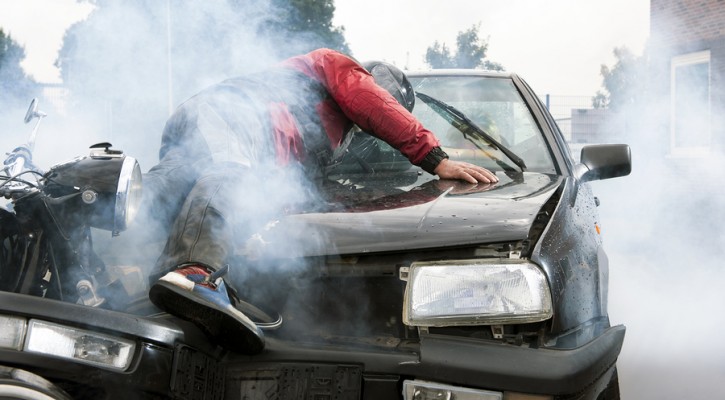
Distracted Driver Survival: Tip of the Day
June 24, 2014
Distracted driving is something all motorcyclists have to deal with. It is a fact of life. No matter how many laws are passed or how many awareness campaigns are run, some people just never learn.
That is, until it is too late. Don’t become a victim to distracted driving. Our survival tips will teach you how to handle that most deadly of highway breeds: the distracted driver.
So without further ado, we give you the first Distracted Driver Survival Tip of the Day: Never ever, ever, ever, ever stop in the middle of the lane.
When approaching a stop light or rolling to a stop in traffic, stop on the side of the lane, plan an escape route, and keep an attentive eye on the rearview mirror. Why? Because sometimes drivers fail to notice stopped traffic.
Using this strategy, you will see the distracted driver, have an escape route planned, and be half way out of harm’s way by the time they get within collision-distance. The motorcycle can be maneuvered onto the shoulder of the road, or between the cars ahead depending on the situation.
Using these Distracted Driver Survival Tips, motorcyclists can #ridesmart, #ridesafe, and #stayalive as they enjoy the ride.
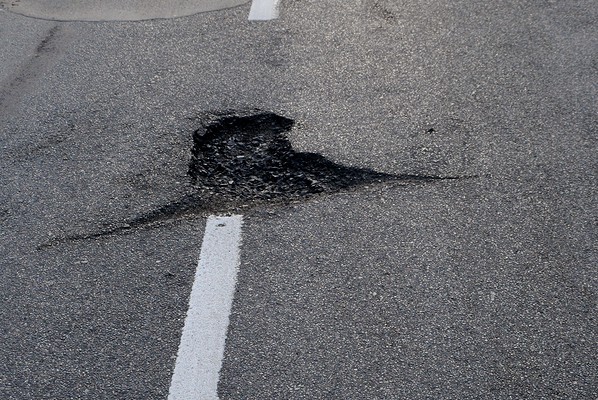
Bikers and the Highway Trust Fund
June 11, 2014
Motorcyclists may face rough road conditions in the years to come. With Congress dragging its feet on the new highway bill, the Highway Trust Fund will have to slow reimbursements to states for highway projects, as well as funding for awareness campaigns and safety measures.
How will this legislation (or lack of legislation) affect motorcyclists specifically?
Well first of all, road construction and maintenance will come to a halt in many cities. That means more potholes for bikers to avoid, and more asphalt cracks that could lead to a serious need for road repair. Local city planners are already struggling to deal with short-term maintenance as well as long-term road projects. Without funding for long-term road projects, traffic congestion is projected to rise as well.
Also at issue is the fight against motorcycle-only checkpoints. Without any revisions to the current highway bill, motorcyclists can expect to continue to be discriminated against when traveling cross-country, making touring and motorcycle events more difficult.
The Recreational Trails Program is due to expire, and without re-authorization, the RTP will lose its authority to issue grants to fund off-highway-vehicle projects and trails.
Finally, motorcycle safety programs under 23 U.S.C. § 402 and § 405 no longer would be authorized. These programs provide grants to states for the motorcycle safety training and anti-distracted driving campaigns that have proven extremely effective in reducing motorcycle deaths in the last few years.
Besides the dire effects on the motorcycle community, the entire country is expected to suffer a loss of 700,000 jobs if the U.S. House of Representatives does not act. The Senate passed its portion of the bill on May 15, and the House version is expected sometime in July.
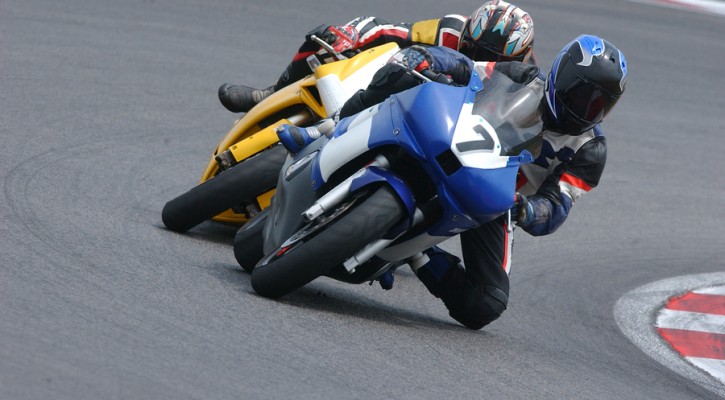
Motorcycle Racing: Race-a-Cop Challenge
May 27, 2014
You wanna race? Fine. Race a cop.
Many sports bike fans have an uncontrollable need for speed. They get their motorcycle license, buy their first bike, learn how to handle a little bit of power and then think they’re ready for motorcycle racing. The only problem is, they’re not. And, inexperienced motorcyclists attempting to street race are the cause of far too many completely-avoidable deaths.
One solution was proposed by a few open-minded Cottonwood Heights police officers: Come on out and race a cop. No wheelie tickets, no speeding tickets, just good old fashioned motorcycle racing on a real race track. They’ll even share their safety gear.
The idea is to get more motorcyclists off the streets and onto safety-oriented race tracks. In fact, no matter what state you live in, many race tracks are open to the public and even provide racing classes for motorcyclists looking to learn.
So, if you have the racing-bug and need a fix, check out programs such as the Race-a-Cop Challenge, Texas’ RideSmart, or California’s Superbike School. Or, join the AMA (American Motorcyclist Association) and get started with their amateur racing program.
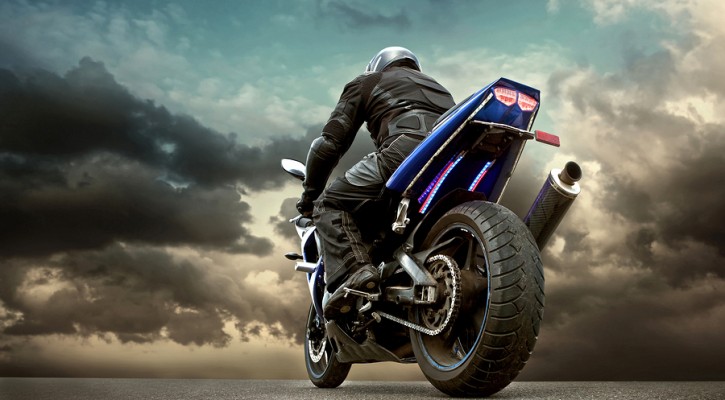
Motorcycle Tips for Riding in the Wind
May 23, 2014
The weather has been a real nut job lately, and even when the sky is clear and the sun is shining the wind never seems to die. So, if you’re planning a cruise any time soon it would be wise to buff up on techniques for riding in the wind.
Wind is a normal part of riding. In fact, the act of riding a motorcycle is much like being in a constant wind tunnel. However, the wind presents fresh hazards for riders as well.
Dirt. When wind speeds are high, dust and dirt kick up off the ground and can sting if you’re not wearing proper motorcycle gear. So, always be prepared by wearing ATGATT (All The Gear All The Time).
Turbulence. High winds can also cause the bike to wobble a bit. Don’t panic and don’t overcompensate. Just remain calm and use basic riding knowledge to keep the center of the bike straight.
Insects. Windy days are dangerous for bugs, too. High winds can send swarms of bugs across busy highways, which is quite unpleasant for bikers without any face cover. Even with a visor, splattered bugs on your helmet can make visibility difficult. However, it’s nothing a little spit-shine can’t handle.
Wind is a nuisance, however, many bikers enjoy cruising through the countryside whether there’s wind or not. Just be remember to wear ATGATT and practice safe riding skills.
A Helmet So Dangerous, It’s Like Wearing Nothing At All
May 21, 2014
A lethal batch of motorcycle helmets were seized by UK trading standards officers recently, who said the helmets were so dangerous it would be like not wearing head protection at all.
Bikers buying cheap helmets online should be on the lookout for helmets labeled “jiekai” “JK 100” or “JK 1000”, as well as other motorcycle helmets listed at prices that seem too good to be true.
According to Peter Stonely, a Principal Trading Standards Officer, the helmets “would give a rider almost no protection in a crash, increasing the chance of brain injury or death”, and wearing the helmets “would give the rider a sense of safety, which the helmet would not back up”.
Any riders who have recently purchased the helmet models should stop using them immediately.
When shopping for motorcycle helmets online, be sure they are DOT-approved. A DOT-approved sticker means they have passed a series of tests and trials to achieve the safety standards set by the Department of Transportation. It also means they are legal, since many states require a DOT-approved helmet to ride.
World’s Fastest Motorcycle Not for Newbies
May 14, 2014
Just in case any of you newbies are fans of Wired Magazine, we thought we should have a little talk about a recent story in their autopia section. A feature on the fastest motorcycle in the world, the Ducati 1199 Panigale R, highlights its 1,200 cc, 195 horsepower engine, its carbon fiber bodywork and its track-tuned suspension. And, why not? These are all quite impressive. However, the article is titled “World’s Fastest Motorcycle Is So Smart, Even Rookies Can Master It”. Just to be clear, under no circumstances should any new rider attempt to operate a 12,000 cc, 195 horsepower engine. Nonetheless, it’s a pretty amazing bike, and you can see an experienced rider (though not a “pro” by any means) take a test drive here:
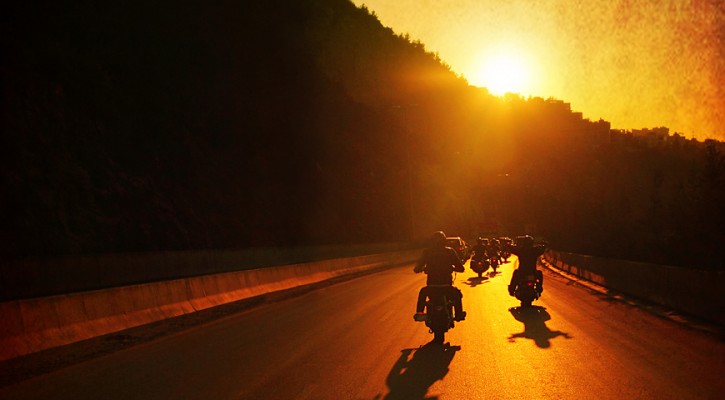
Eyewear for Night Riders
May 10, 2014
Night riding can be a great experience. There are fewer cars on the road and the air is cooler, but visibility issues pose a greater risk for motorcyclists without the right night gear. So we put together this handy list of vision-improving gear for your night cruising pleasure.
Night Riding Glasses. Improve your night vision with a good pair of night riding glasses. These bad boys are a bargain buy, starting at just 99 cents.
Night Riding Goggles. Another low-cost option for night riders, these goggles designed for motorcyclists are designed with yellow shatter-proof lenses for added safety.
Photochromatic Visor. Some helmets come with photochromatic visors. These visors darken in the sunlight and become clear at night for better visibility. There are also helmets with interchangeable visors, so you can switch to the clear visor as the sun goes down.
Fort Sill Hosts Freedom’s Thunder Motorcycle Rally
May 9, 2014
This year, Fort Sill hosted its ninth annual Freedom’s Thunder Motorcycle Rally, an event geared towards motorcycle safety tips and awareness. Despite inclement weather, the rally brought in hundreds of riders looking to learn new ways to stay aware, focused and alive.
Since the Army lost 14 soldiers in motorcycle accidents nationwide, events such as Oklahoma’s Freedom’s Thunder Rally are important for raising awareness and saving lives. To see the full story, follow the link here:
http://www.kswo.com/story/25468748/fort-sill-hosts-ninth-annual-freedoms-thunder-motorcycle-rally
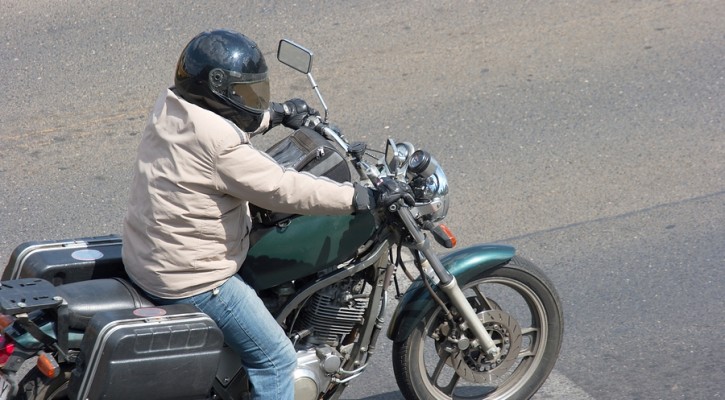
Motorcycle Awareness for the Clueless – Lesson 3
May 9, 2014
Lesson 3: Are their brake lights out?
Have you ever noticed that most motorcycles slow down with no visual warning (brake light)? You might have been in traffic, or pulled up to a stoplight, and wondered “Why didn’t that biker’s brake lights turn on? Are they busted?”.
More than likely, their brake lights work just fine, they just aren’t using their brakes. Most bikers avoid using their brakes when slowing down or approaching an intersection. Instead, they utilize a downshifting strategy to reduce speed, and therefore have no need for brakes or brake lights.
So, the next time you find yourself driving behind a motorcycle make sure you give them plenty of space. Since most drivers have been conditioned to respond to brake lights, it can more difficult to notice a biker’s deceleration without the bright red lights there as a warning.
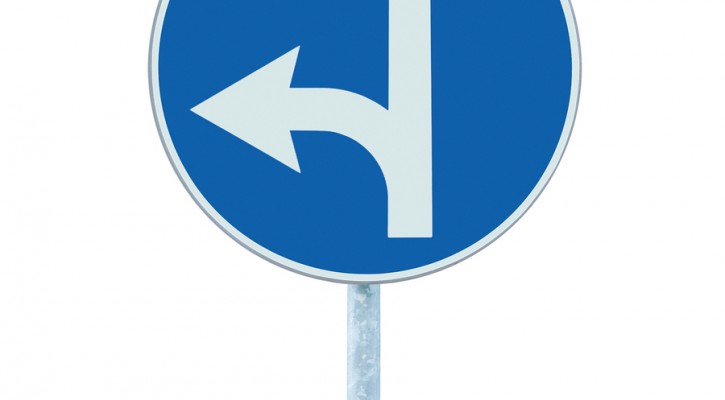
Motorcycle Awareness for the Clueless – Lesson 2
May 8, 2014
Lesson 2: Deadly Left-Hand Turns
Left-hand turns account for more than half of two-vehicle motorcycle collisions, and result in many motorcycle fatalities each year. Due to limited visibility, motorcycles – as well as cyclists and pedestrians – are at a much higher risk when passing through intersections. For this reason, always be sure to take extra caution when making a left hand turn.
